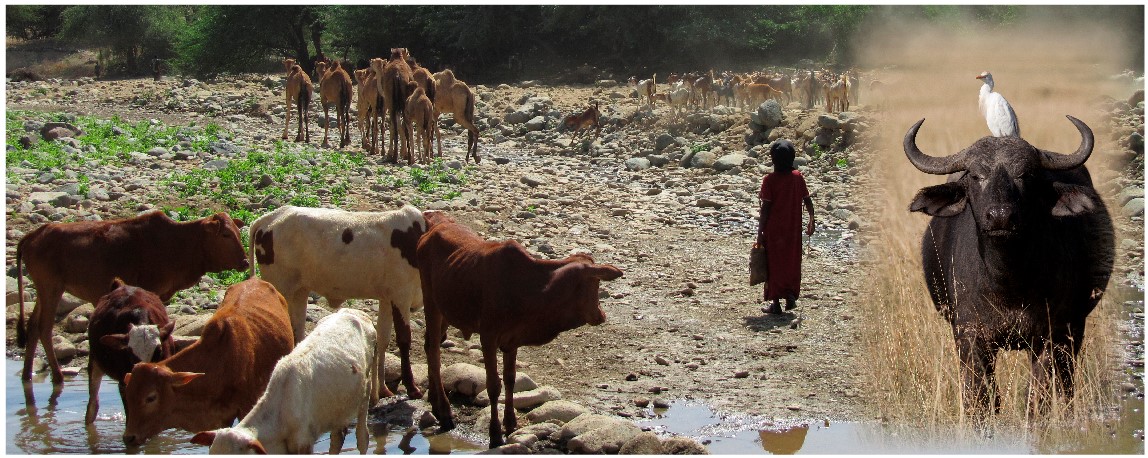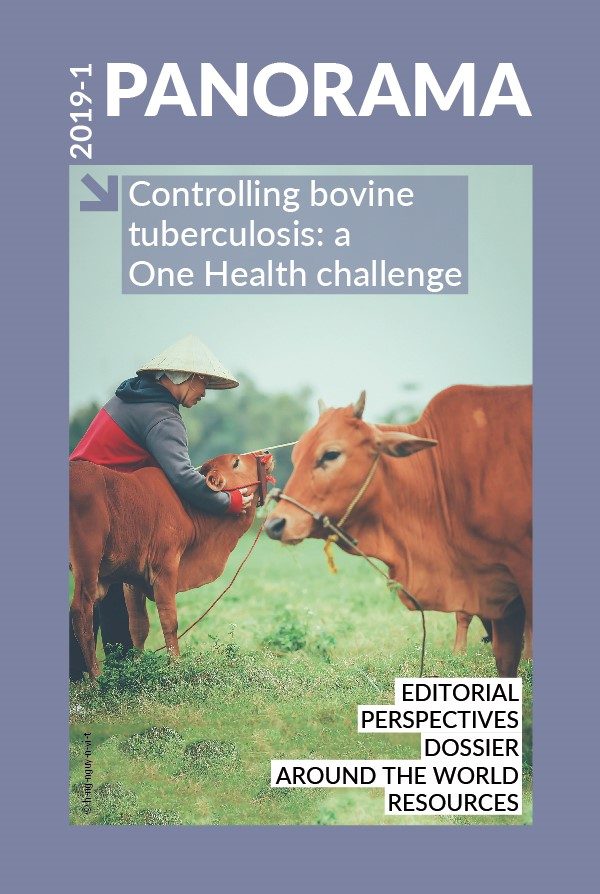Around the world Posted on 2019-05-21 18:07:11
Thematic events
Use of BCG vaccination for bovine tuberculosis control
Jerusalem workshop
Keywords
Authors
Ben J. Marais(1), Bryce M. Buddle(2) & Charles Greenblatt(3)*
(1) The Marie Bashir Institute for Infectious Diseases and Biosecurity, the University of Sydney, Australia.
(2) AgResearch, Hopkirk Research Institute, Palmerston North, New Zealand.
(3) Department of Microbiology and Molecular Genetics,The Institute for Medical Research Israel-Canada, The Hebrew University of Jerusalem, Israel.
* Corresponding author: charlesg@ekmd.huji.ac.il
The designations and denominations employed and the presentation of the material in this article do not imply the expression of any opinion whatsoever on the part of the OIE concerning the legal status of any country, territory, city or area or of its authorities, or concerning the delimitation of its frontiers and boundaries.
The views expressed in this article are solely the responsibility of the author(s). The mention of specific companies or products of manufacturers, whether or not these have been patented, does not imply that these have been endorsed or recommended by the OIE in preference to others of a similar nature that are not mentioned.
BCG vaccination of cattle
Studies have demonstrated that BCG vaccination of cattle can be a valuable tool in bTB control [3, 4]. A major constraint has been potential positive reactions with the traditional tuberculin skin test. However, these concerns have been addressed with new tests that utilise M. bovis antigens not expressed by BCG [5]. Potential impacts on bTB diagnosis are also less relevant in settings that do not export cattle and where ‘test and cull’ is not a control option.
BCG vaccination of camels
The dromedary camel (Camelus dromedarius) is important for the livelihood of many pastoral communities and camel milk is traditionally consumed raw. Camel tuberculosis has been reported in multiple countries [6, 7, 8]. There is a need both to develop more sensitive and specific tests for bTB surveillance and diagnosis and to assess BCG efficacy against bTB in domesticated camels.
BCG vaccination of wild animals
Vaccination of reservoir species aims to decrease bTB transmission among wildlife and spill-back to domestic animals. Baits containing oral BCG vaccines have been successfully used in possums in New Zealand [3], badgers in Ireland [9], and wild boar in Europe [10]. African buffalo (Syncerus caffer) are a major bTB reservoir species [11] and play an important role in bTB spillover to other wildlife [11], including rare and endangered species such as black rhinoceros (Diceros bicornis) [12] and African wild dog (Lycaon pictus) [L.M. De Klerk-Lorist, personal communication]. The potential wildlife conservation value of BCG vaccination requires further exploration.
Table I. – Bovine tuberculosis knowledge gaps and research needs identified at the Jerusalem workshop
| Knowledge gap | Research need |
|---|---|
| Poorly quantified bTB prevalence in humans, cattle, camels, water buffaloes and relevant wildlife |
|
| What to do when ‘test and cull’ is not an option? |
|
| Use of BCG vaccination to reduce bTB in domestic animals and wildlife reservoirs |
|
* bTB: bovine tuberculosis, mostly caused by Mycobacterium bovis
** TB: tuberculosis, mostly caused by M. tuberculosis
*** BCG: M. bovis bacille Calmette-Guerin
Conclusion
Following a review of the efficacy and safety of BCG vaccination for bTB control in domestic livestock and wildlife [3], there is scope to assess the ability of creative BCG vaccine delivery strategies to limit zoonotic disease risk and to consider the conservation value of BCG vaccination in key affected wildlife, such as the African buffalo and associated ‘spill-over’ species.
Acknowledgements
http://dx.doi.org/10.20506/bull.2019.1.2931
References
- Waters W.R., Palmer M.V., Buddle B.M. & Vordermeier H.M. (2012). – Bovine tuberculosis vaccine research: historical perspectives and recent advances. Vaccine, 30 (16), 2611–2622. https://doi.org/10.1016/j.vaccine.2012.02.018.
- Buddle B.M., Vordermeier H.M., Chambers M.A. & de Klerk-Lorist L.M. (2018). – Efficacy and safety of BCG vaccine for control of tuberculosis in domestic livestock and wildlife. Front. Vet. Sci., 5 (Art 259). https://doi.org/10.3389/fvets.2018.00259.
- Buddle B.M., Parlane N.A., Wedlock D.N. & Heiser A. (2013). – Overview of vaccination trials for control of tuberculosis in cattle, wildlife and humans. Transboundary Emerg. Dis., 60 (Suppl. 1), S136–S146. https://doi.org/10.1111/tbed.12092.
- Nugent G., Yockney I.J., Whitford J., Aldwell F.E. & Buddle B.M. (2017). – Efficacy of oral BCG vaccination in protecting free-ranging cattle from natural infection by Mycobacterium bovis. Vet Microbiol., 208, 181–189. https://doi.org/10.1016/j.vetmic.2017.07.029.
- Vordermeier H.M., Jones G.J., Buddle B.M. & Hewinson R.G. (2016). – Development of immuno-diagnostic reagents to diagnose bovine tuberculosis in cattle. Vet. Immunol. Immunopathol., 181, 10–14. https://doi.org/10.1016/j.vetimm.2016.02.003.
- Wernery U. & Kaaden O.R. (2002). – Infectious diseases in camelids. Berlin: Blackwell Science, pp 23–373.
- Zubair R., Khan A.M.Z. & Sabri M.A. (2004). – Pathology in camel lungs. J. Camel Sci., 1, 103–106.
- Ahmad I., Kudi C.A., Babashani M., Chafe U.M., Yakubu Y. & Shittu A. (2019). – Tuberculosis in dromedary camels slaughtered in Nigeria: a documentation of lesions at postmortem. Trop. Anim. Health Prod., 51 (1), 73–78. https://doi.org/10.1007/s11250-018-1661-0.
- Gormley E., Ní Bhuachalla D., O’Keeffe J., Murphy D., Aldwell F.E., Fitzsimons T. et al. (2017). – Oral vaccination of free-living badgers (Meles meles) with bacille Calmette Guerin (BCG) vaccine confers protection against tuberculosis. PLoS One, 12 (1), e0168851. https://doi.org/10.1371/journal.pone.0168851.
- Gortázar C., Beltrán-Beck B., Garrido J.M., Aranaz A., Sevilla I., Boadella M. et al. (2014). – Oral re-vaccination of Eurasian wild boar with Mycobacterium bovis BCG yields a strong protective response against challenge with a field strain. BMC Vet. Res., 10, 96. https://doi.org/10.1186/1746-6148-10-96.
- Hlokwe T.M., De Klerk-Lorist L.M. & Michel A.L. (2016). – Wildlife on the move: a hidden tuberculosis threat to conservation areas and game farms through introduction of untested animals. J. Wildlife Dis., 52 (4), 837–843. https://doi.org/10.7589/2015-10-281.
- Miller M.A., Buss P.E., van Helden P.D. & Parsons S.D.C. (2017). – Mycobacterium bovis in a free-ranging black rhinoceros, Kruger National Park, South Africa, 2016. Emerg. Infect. Dis., 23 (3), 557–558. https://doi.org/10.3201/eid2303.161622.












